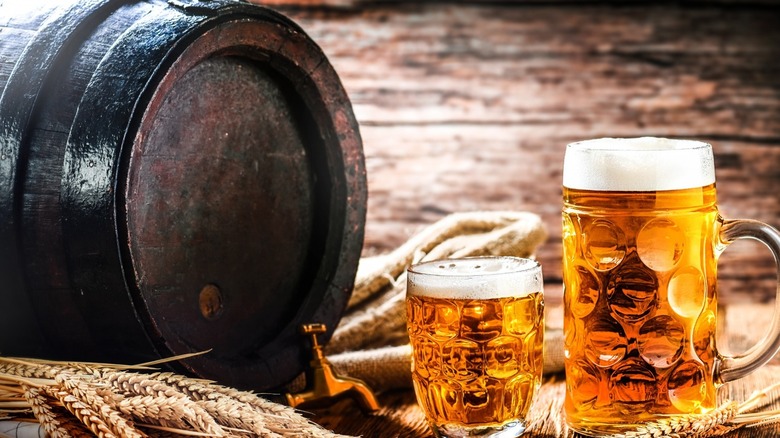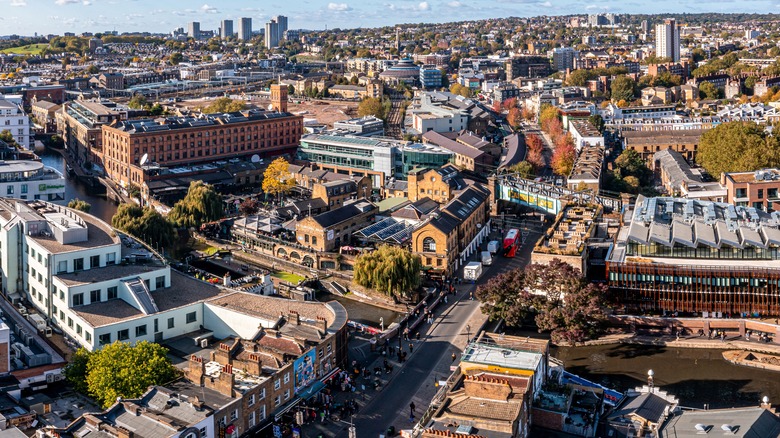The 19th-Century London Beer Flood That Turned Deadly
If Homer Simpson, Norm Peterson, and every beer commercial ever made are to be believed, beer is a nectar of the gods that enhances your social life and makes your weekends more exciting. After all, people who imbibe this amber beverage in advertisements lead a much more interesting existence — chatting amicably with bears, surfing amongst wild horses, or heading for the mountains atop their trusty steeds. As their joyful smiles and sighs of contentment show, nothing refreshes the soul after a hard day's work more than a pint of ale. One would almost think this beverage was magical.
It turns out that the product of barley and hops may not be as benevolent as it seems. Sure, when confined to a frosty mug, beer spreads bonhomie and quenches the thirst as nothing else can, however, when hundreds of thousands of gallons of this coveted liquid are unleashed upon an unsuspecting public, beer can prove quite deadly. In fact, this is precisely what happened in London on October 17, 1814.
Breweries competed to see who could have the biggest vat
In the early 19th century, the brewery equivalent of "keeping up with the Joneses" was underway. These facilities were consistently trying to outdo one another to see who could have the biggest vat. Author Ian S. Hornsey wrote in his book "A History of Beer and Brewing", "It is thought that one of the most spectacular sights, certainly at the major London porter breweries, was the sheer size of the storage vats, much kudos being attached to the brewer in possession of the largest example."
It wasn't long before these beer storage containers became outrageously huge. According to Bon Appétit, it was one of these gargantuan tanks that were built to hold 20,000 barrels of beer that caused the deadly London Beer Flood.
At Meux's Brewery, the 700-pound hoop slipped off a cask that stored a 10-month-old batch of porter (per History). The 22-foot-high vat ruptured which led to over 320,000 gallons of beer flooding into the surrounding areas. In the absence of modern drainage systems, the liquid quickly spread out onto streets and into nearby homes. The gush collapsed the back wall of the brewery, leveled part of the Tavistock Arms pub, and a 15-foot-high wave of porter filled the basements of two nearby homes, causing the structures to come down.
The victims were all women and children
When the dust settled and the beer dried up, there were eight lives lost — all women and children ranging from age three to 65. A teenage pub server was killed by a falling wall. The rest were drowned or crushed in their basement dwellings. Four of these were attending an Irish wake mourning the death of a toddler that had been killed the day before (Historic UK).
The brewery was not found culpable as the accident was deemed an "Act of God," but one important change did follow this tragedy. Wooden vats were replaced with lined concrete ones in an effort to prevent this from ever happening again. The oak vats were dismantled and used to make bars in the city. The heavy stench of beer permeated the air for months. Sadly, those who lost their loved ones or their homes received zero compensation from either the brewery or the government (via Smithsonian Magazine).
The next time you find yourself with a cold brew in your hand, raise a glass to the memories of those that lost their lives that fateful day. And, if you happen to be in The Old Smoke, the bar you're sitting at may be made from the recycled oak of one of those big historical vats.


